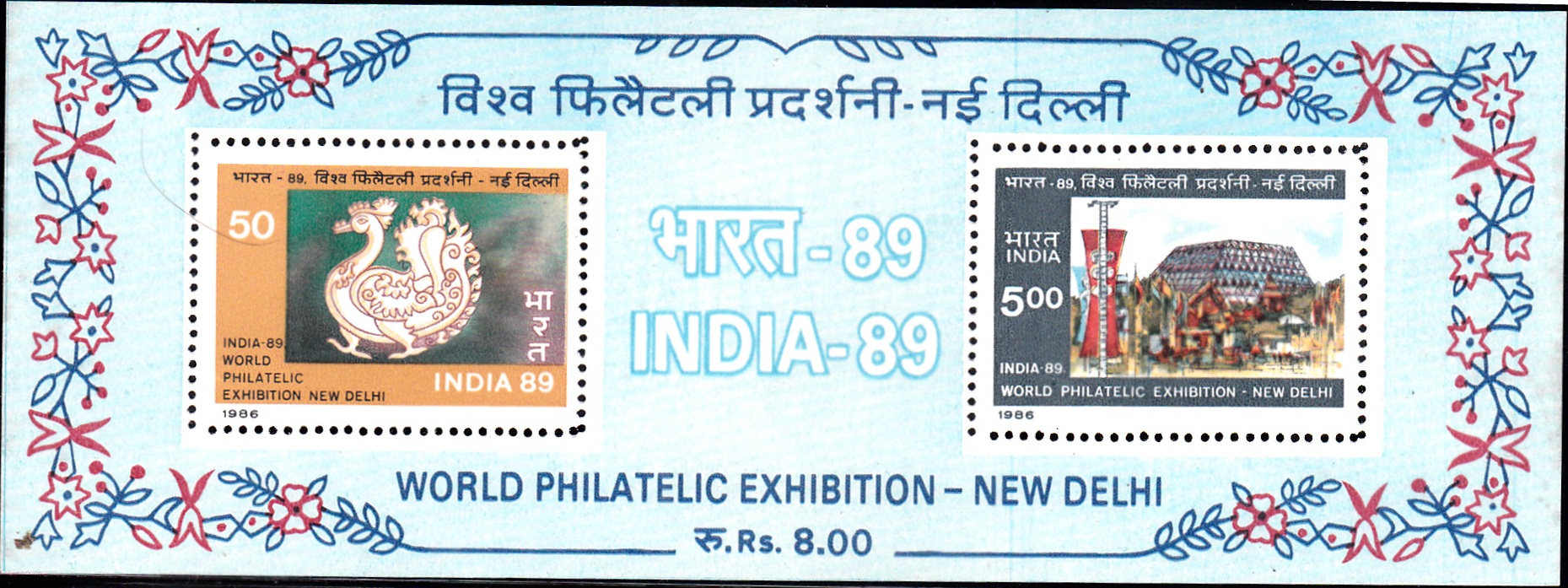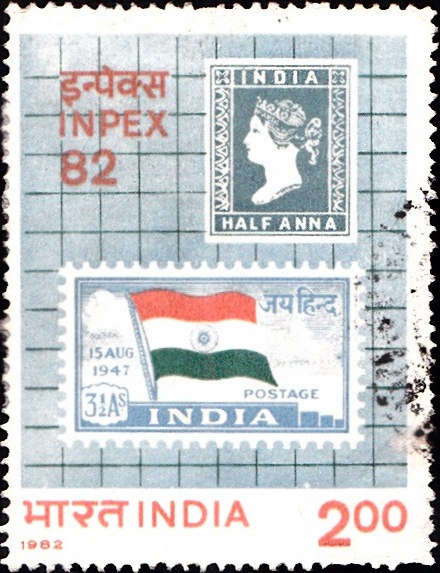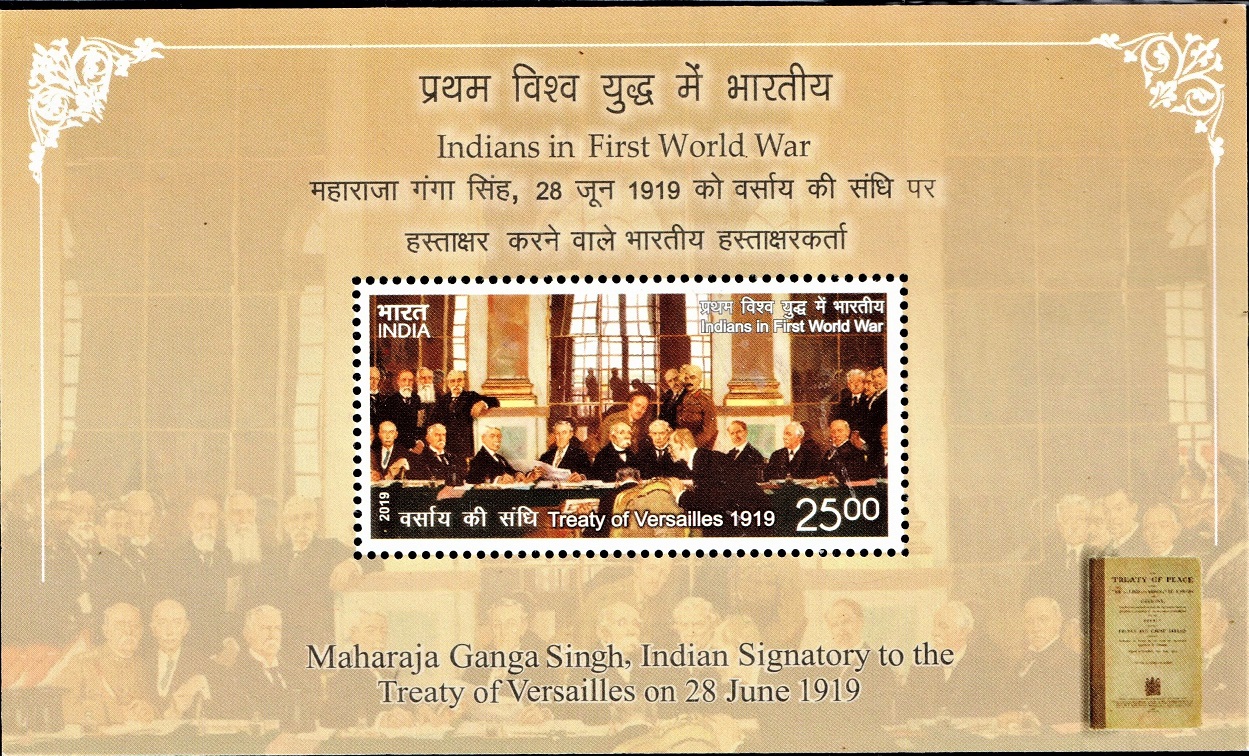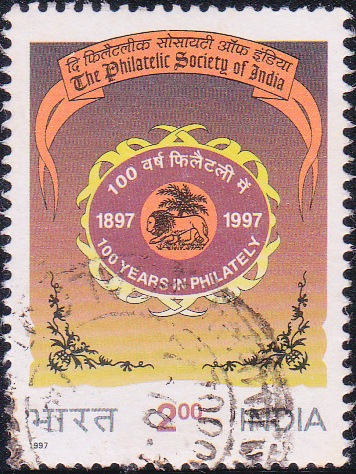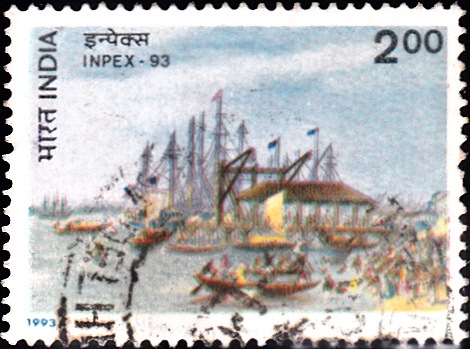
Custom-House, WHARF, Calcutta
A special postage stamp on the ‘INPEX–93‘, Indian National Philatelic Exhibition, Calcutta :
 Issued by India
Issued by India
Issued on Dec 27, 1993
Issued for : The Department of Posts is happy to mark the Sixth India National Philatelic Exhibition held in this historic city with the issue of the stamp and the first day cover both showing significant landmarks of the city.
Type : Stamp, Postal Used
Colour : Multi Colour
Denomination : 200 Paise
Overall size : 3.91 x 2.90 cms.
Printing size : 3.55 x 2.54 cms.
Perforation : 13 x 13
Paper : Imported Unwatermark Adhesive Photogravure Stamp Paper
Number of stamps Printed : 10,00,000
Number per issue sheet : 35
Printing Process : Photogravure
Printer : India Security Press
About :
- The city of Calcutta, more than three hundred years old, continues to live through the sketches, lithographs, engravings and paintings of artists of the bygone era. Many of the civil servants during the British administration and even before, showed artistic gifts of high quality and their works provide useful historical records of the old city.
- Ganga, the river of life, has been inextricably associated with the founding of Calcutta on its bank and its growth into an important shipping port of the orient.
- Sir Charles D’ Oyly, poet and artist, spent forty years in India (1798-1838) as a civil servant under the East India Company. His Views of Calcutta and its Environs was published in 1848 after his death. Included in these Views is a picturesque scene of the shipping on the river Hooghly, viz., “Custom-House, Wharf” (since 1835). The Journal of Bishop Reginald-Heber records that “Vessels of all descriptions, to the burden of 600 tons, may lie almost close up to this quay, and there is always a crowd of ships and barks”.
- Sir Charles D’ Oyly’s depiction of the old custom-house wharf brings to life the vibrant trade and commerce that flourished through the tall-masted sea-facing vessels which sailed the waters from the port of Calcutta.
- The Victoria Memorial as a museum of medieval and modern Indian history was conceived by Lord Curzon at the turn of the century. The Indian aristocracy responded liberally to Curzon’s appeal the construction of this stately building surrounded by an exquisite garden was entirely funded by Indian subscriptions. Sir William Emerson, President of the British Institute of Architect of designed this building adopting Italian Renaissance style with a touch of orientalism in the arrangement of the domes.
- The work of construction was entrusted to Martin & Co. of Calcutta. While the marble used for the building (338′ x 228′ and soaring to a height of 184′) was quarried at Makrana in the princely State of Jodhpur, the groups of the statues ornamenting the memorial porches and the central dome were executed in Italy. A bronze Angel of Victory crowns the dome. The foundation stone was laid by the Queen‘s grandson, the Prince of Wales (later King George V) on January 4, 1906, but it was not before December 28, 1921 that the Memorial became open to the public. The Memorial houses a fine collection of paintings, sculptures and various other memorabilia of the Raj. Since January 1988, the monuments has been illuminated investing it with an aura of mystery as the photograph on the First Day Cover shows.
Subscribe
Login
0 Comments
Oldest


